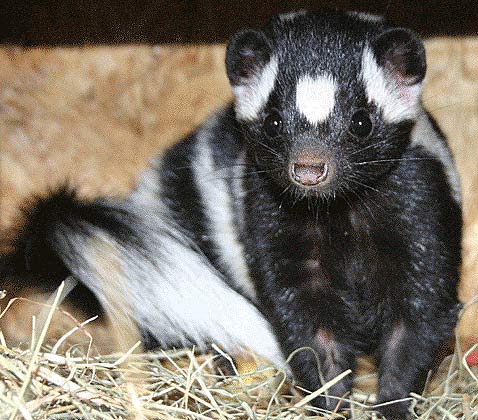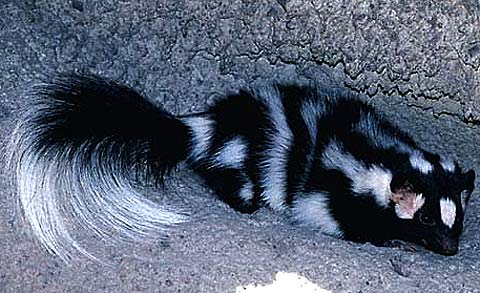Eastern Spotted Skunk – Small, Agile Stinker

Often confused for weasels because of their similar body shape, the Eastern spotted skunk is one of the most common skunks in existence. With distribution covering Canada, The United States, and Northeastern Mexico, the Eastern Spotted is in no danger of going extinct anytime soon, but with a body length of just over two feet (68.8 cm) and a weight of only about four pounds (just under 2 kg), this little critter isn’t always that easy to spot. In fact, if you saw one, you’d probably assume it was a weird looking squirrel rather than a relative of one of its much larger cousins. Like all skunks, it finds itself preyed upon by bobcats, mountain lions, bears, large birds of prey and humans. This means that it also needs a defense mechanism as strong as the other members of its family, and its got that in spades. The eastern spotted is equipped with sharp claws that it uses both to hunt and to defend itself from any predator that gets too close, but things don’t often get that far, as it’s known to stamp its front feet to warn other creatures not to approach. If they don’t heed this warning, the agile creature (it is by far the most agile and quick member of the family) will do a full handstand before spraying its odorous secretion at its attacker, usually warding it off.

Eastern spotted skunks are primarily nocturnal, and while they don’t traditionally hibernate, they’re known to severely slow down activity during winter months. Although they do breed towards the winter’s end, usually producing litters of five babies who will each take about two months before they develop their skunk musk, therefore making them ready for life on their own. As previously stated, it’s rare for human to catch a glimpse of these small and fast creatures, but if you ever do, don’t ask it to do its handstand trick, it really stinks.

